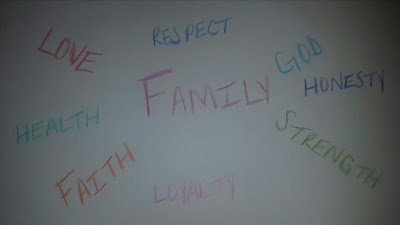At the start of this class I believed photojournalism
was the practice of communicating news through photos, but throughout the
course I’ve learned that it is much more than just that. I believe yes it does
do that, but I also believe it is the practice of informing the world about not
only news but whatever the photojournalists is interested in. I thought it was
mostly focused on wars and issues around that, but I learned that
photojournalism covers a variety of areas. I stick by my reason on why I believe
it is important to know the history of photojournalism. I stick by it because I
believe it is extremely important for people to understand its history and how
much photojournalist have gone through to get stories out there to the world,
so people can see what is truly going on around the world. I had many “Ah-ha”
moments throughout this course because I feel that I learned so much. Learning about
the past techniques of photographing was amazing to understand what photographers
had to go through. It was also amazing to learn about so many different
photojournalists and how courageous many of them are. I learned that
photojournalists are so passionate that they put their lives on the line to
give their audience a story.
I still believe
photographs change the world. I still believe this because if it were not for
the world being able to see images about various subjects there would never be changes
in the world. I have seen so many images this semester that helped back up my
belief, I truly believe especially images help create a feeling that make
people want to change the world. Just to talk about a few examples there was
the picture of starving children that really touched me and I believe that have
also touched so many people in the world. I believe images like this help to
create change in the world because anyone with a heart looking at an image like
this will feel so sad and want to help. Looking at an image like that makes
people want to do what they can to help these children to get food and we ca
understand this through many organizations that donate food to these starving
children. A second photo I believe backs up my belief about images changing the
world is the image from the 9/11 attack in New York. The image showed just what
people were going through covered all in debris, but still helping each other. I
am a firm believer that if it were not for images like these New York would
never have gotten as much help as they did. These images really helped to back
up my belief that images change the world and are good examples of how they do.
Photo by Salman Mohammed
Image Source: https://dollarparadox.quora.com/CAPITALISM-Neo-Fascism
Photo by Tina Moore
By viewing
my classmates’ photojournalist profile, I learned about so many new
photojournalists. It was really amazing how many photojournalists I was able to
learn about and I am glad I took this course because it really helped me to
think not only about photojournalism but really about history itself. From my classmate,
Luke Allen, I learned that Andrew Burton uses shallow depth of field in combination with black and white to create a feeling of contrast that by nature isolates the subject in his photos. If you look at the photos he incorporated
of Andrew Burton’s, you can really see what he means by this and the images are
truly incredible and really put emphasis on his subjects. From Sirjana
Lamichhane, who focused on Lynsey Addario, I learned how much of a strong woman
photojournalist she is and how she lives by her ethics and beliefs. She explained
that Addario was able to give a dead soldiers father details he craved about
his son’s death, I think this was amazing of her to personally talk to the soldier’s
father and help him get closure through his time of grief. Lastly, through
Kelly Reilly, who spoke about Ruth Orkin, I learned how much of an honest woman
she is. I loved how she explained that Orkin always did her best to be honest with her images and how she took images of what she thought was beautiful. I think
it is great that she does that and I can only hope that all photojournalists
have this same passion as her.
Photo by Andrew Burton
Photo by Lynsey Addario
Image Source: http://www.lynseyaddario.com/war-and-revolution-in-the-middle-east/syrias-refugees/ADDARIOSYRIANREFS003
Photo by Ruth Orkin
Image Source: http://www.today.com/id/44182286/ns/today-today_news/t/subject-american-girl-italy-photo-speaks-out/
For my
creative experiential exercise, I decided to base it on wrestling. My father is
a wrestling coach and used this exercise to capture images of his wrestlers in
action. I took these images on my phone, which is a Samsung Galaxy S6, as you
can tell the quality isn’t the best. I used different features on my phones camera
to try to create different effects of the images and I also tried to use
different angles to take the photos. For filter I used no effect for some but I
also used vintage and vignette. The vintage was my favorite because I felt like
it really created a nice mood and effect to the photos, but I also liked
vignette because it helped to put the focus on the wrestlers. I also used the
grid lines feature on my camera so it could help me to either center the
subjects or put them off to the side. I really took this exercise and did my
best to think like a photojournalist and I really enjoyed it.
Photo by Ashley Alvarado
Photo by Ashley Alvarado
Photo by Ashley Alvarado
Photo by Ashley Alvarado











